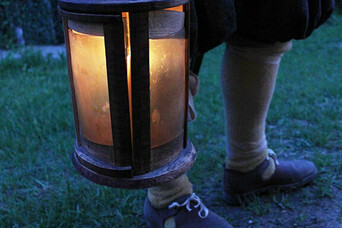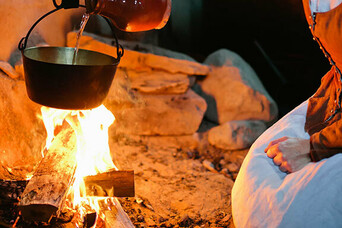The Virtue That A Great Fire Hath
Midsummer was one of the most popular medieval holidays in Northern Europe, and it also coincides with an important Christian holiday.

The astronomical summer solstice (the longest daylight of the year) fluctuates each year, but it usually falls between June 20 and June 22 in the northern hemisphere. Midsummer, or the traditional middle of the summer, was celebrated on the night of June 23-June 24.
The second half of the summer was one of the most perilous times of the year. Insects (and the diseases they carried) flourished, and the fair weather enabled roving troublemakers to wreak havoc on the medieval countryside. Bonfires offered an opportunity to appeal to the symbolic power of fire to protect one's family and property. Midsummer revelers ate, drank and danced around enormous bonfires to conjure a fire's protective heat and light.


Did you know?
As with most pagan holidays, Midsummer coincided with a Christian one. Midsummer is also St. John's Day, which commemorates the birth of St. John the Baptist. With Christmas on December 25, the two monumental figures of Christianity were born exactly six months apart.


By the mid-1500s, midsummer celebrations had largely died out in cities. Rural communities, however, continued to mark the holiday with bonfires, dancing, drinking and general revelry late into the night on Midsummer's Eve. Playwrights - most notably Shakespeare, with plays like A Midsummer Night's Dream - kept the tradition alive on English stages. And although the fires were long-extinguished in London by the time John Stow first published his Survey of London in 1598, he remembered the adornment of houses with garlands, confections and, most importantly, light:

In the Months of June, and July, on the Vigils of festival days, and on the same festival days in the Evenings after the Sunne setting, there were usually made Bonfires in the streets, every man bestowing wood or labour towards them: the wealthier sort also before their doors near to the said Bonfires, would set out Tables on the Vigiles, furnished with sweet bread, and good drink, and on the Festival days with meats and drink plentifully, whereunto they would invite their neighbors and passengers also to sit, and be merry with them in great familiarity, praising God for his benefits bestowed on them. These were called Bonfires as well of good amity amongst neighbors that, being before at controversies, were there by the labor of others, reconciled, and made of bitter enemies, loving friends, as also for the virtue that a great fire hath to purge the infection of the air.
Though these traditions had faded in all but the most rural places before Mayflower sailed, they were remembered fondly for the almost mythical power of the light to protect and also to bring neighbors - even unfriendly ones - together.